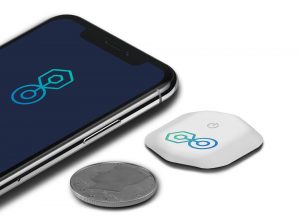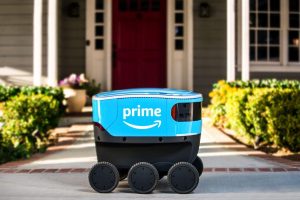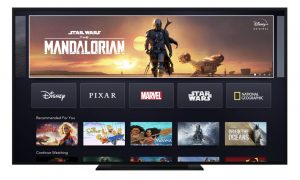During an opening keynote at the virtual Consumer Electronics Show (CES) 2021, Steve Koenig, Vice President of Research and Lesley Rohrbaugh, Director of Research for the Consumer Technology Association (CTA) discussed some of the projected trends to watch for the upcoming year.
Not surprisingly, many of the trends that are expected to dominate the next 12 months in tech relate to remote, well, everything, along with gear and services that families and individuals can enjoy at home.
Here’s a rundown of some of the biggest projected trends for the year.
Connected Health, Wearables, & Self-Care
Not surprisingly, connected health monitoring devices are seeing an exponential rise already and are forecast to jump even higher. The CTA’s U.S. Consumer Technology Five-Year Industry Forecast notes that connected health monitoring devices saw $365 million in U.S. shipment revenue in 2019, which almost doubled to $632 million in 2020. That is projected to rise to $845 million this year and explode to $1.246 million by 2024.
In a separate study, Deloitte predicted that 5% of all patient visits worldwide would be by video in 2021 and the market for telehealth virtual visit solutions, including ones that offer video as well as those that don’t, would reach $8 billion.

Oura Ring
Wearables and self-care gadgets are also on the rise as people look at ways to stay fit and get much-needed exercise while being on lockdown, unable to go to their local gym. There are innovative new devices beyond your typical smartwatch and activity tracker like the Oura Smart Ring, which tracks metrics about your body and activity through sensors on the palm side of your finger. It tracks sleep, heart rate, body temperature as well as activity and readiness. But unlike other devices, its focus is on providing a score that can help you adjust habits based on your personal health and needs.

BioIntelliSense’s new BioButton™ for 90-days of continuous wireless temperature and vital signs monitoring on a coin-sized disposable medical device
Introduced in May of last year is another interesting device Koenig and Rohrbaugh highlighted: the BioIntelliSense BioButton. The single-use medical device is the size of a coin and can be used to measure temperature and other vital signs continuously, for up to 90 days. The idea is for early detection of adverse trends using the proprietary biosensor technology and advanced analytics. It’s not necessarily a product targeted at average consumers but it’s an ideal option in Remote Patient Monitoring (RPM) scenarios.
In the future, Koenig and Rohrbaugh believe we’ll see things like robot triage helpers, artificial intelligence (AI) being more widely used in diagnosing illnesses, and virtual reality (VR) used more in the medical field.
Robotic Delivery Systems

Amazon’s Scout
Robotic and autonomous delivery systems were being tested and piloted long before the pandemic hit. Amazon tested its delivery robots, called Scout, in California way back in the summer of 2019, delivering parcels to customers throughout urban destinations. They were accompanied by humans, called Scout Ambassadors to ensure all went well and observe public reaction to the technology.
While people were initially skeptical about robotic deliveries, the technology is looking far more appealing now than ever. CTA’s Autonomous Delivery System: Consumer Awareness & Favorability Study from June 2020 found that 26% of consumers were more favorable of flying drones used for making home deliveries at that time, 26% were more favourable of robotic delivery vehicles, like sidewalk delivery robots, and 25% were more favourable of self-driving vehicles used for deliveries.
AI & Robotics
One of the focuses of CES over the last few years has been robotics, and that area of tech is expected to continue its upward trend in 2021. Rohrbaugh notes that robotics will find its way into every facet of our lives, from cleaning to delivery, retail inventory and close-contact tasks as we continue to practice social distancing.

Samsung’s Bot Handy can do everything from help you load the dishwasher to pour a glass of wine.
CES 2021 showed some interesting innovations in robotics, some of which truly demonstrate the future of the technology. Samsung’s Bot Handy, for example, is a tall, rectangular one-armed robot assistant with pincers that can do everything from help you load the dishwasher to pour a glass of wine.
Vehicle Trends & 5G
Automotive tech has been on the rise at CES for the last several years. And this year, the innovation continued, even if show-goers weren’t able to see the latest concept vehicles in person. These include, most notably, self-driving and electric vehicles. But in-car entertainment and connectivity are also rapidly going high-tech. The big trend for 2021 will likely be cellular V2X connectivity, said Koenig, as 5G networks and smart cities continue to be built out.
Part and parcel with 5G being offered in cars in the future is the development of 5G networks around the globe. Koenig and Rohrbaugh forecast that by the middle of the decade, there will be 135 commercial 5G networks around the world.

GMC Hummer
Koenig, a truck-lover himself, couldn’t help but also mention GM’s really cool new GMC Hummer EV truck that can not only go forwards and backwards, but also do a sideways crab walk. Why would it need to do that? Who knows. Nonetheless, innovation and experimentation is on the rise.
Streaming Television
Is it even possible for streaming television to grow any more than it already has? In a conference session called If The Stream Works, the Dream Works: Streaming TV, presented by Brian Fuhrer, Senior Vice President or Strategy and Thought Leadership at Nielsen, he notes that streaming now accounts for 23% of total usage among over-the-top (OTT) capable homes; and the older demographic is getting on board now as well.

Not only are people streaming TV more often, but they are also spending more time watching when they do. Perhaps the most shocking figure: CTA noted that it took Disney+ only five months to reach the 50-million subscriber mark, a feat that took Netflix seven years to achieve. This isn’t just a sign of the pandemic and people watching more TV at home, of course. It’s also a sign of the times: streaming TV is far more established now then it was when Netflix first arrived and changed the game. Nonetheless, the figure is staggering.
There is an actual product that might see an uptick as a result of this: televisions. Now that people are spending more time at home watching TV and movies and playing video games, they are saving money that can be invested in an upgraded television. And they might be willing to shell out for the best of the best: Deloitte predicts that more than a million 8K TVs will be sold this year, equating to $3.3 billion and almost double that of sales in 2020.
Return to Work
On a hopeful note, the pair predict that, before the end of the year, we will see plenty of innovations related to helping people go back to work in a safer space. This means the implementation of touchless and voice-enable technology in workplaces, along with technology to help clean the air, such as air purifiers and purification systems.

LG PuriCare mini air purifier
CES 2021 saw the launch of many small personal air purifiers, like the LG PuriCare, which could make their way to public places as well, like restaurants or small offices.
There will likely also be an influx of products designed to help promote and maintain social distancing in the workplace, limit occupancy, and allow for remote collaboration as well.
Bottom Line
Whereas tech trends in previous years have included various product categories like smart home, large-screened TVs, and wireless headphones, this year, it’s all about technologies that will foster a new way of life.
At the heart of any of the suspected 2021 trends is a common goal: to keep us all healthy and safe. And if that’s the direction tech is going, it’s definitely a positive one.
Related:
Hot Tech Categories Fueled By The Pandemic Aren’t What You Think



